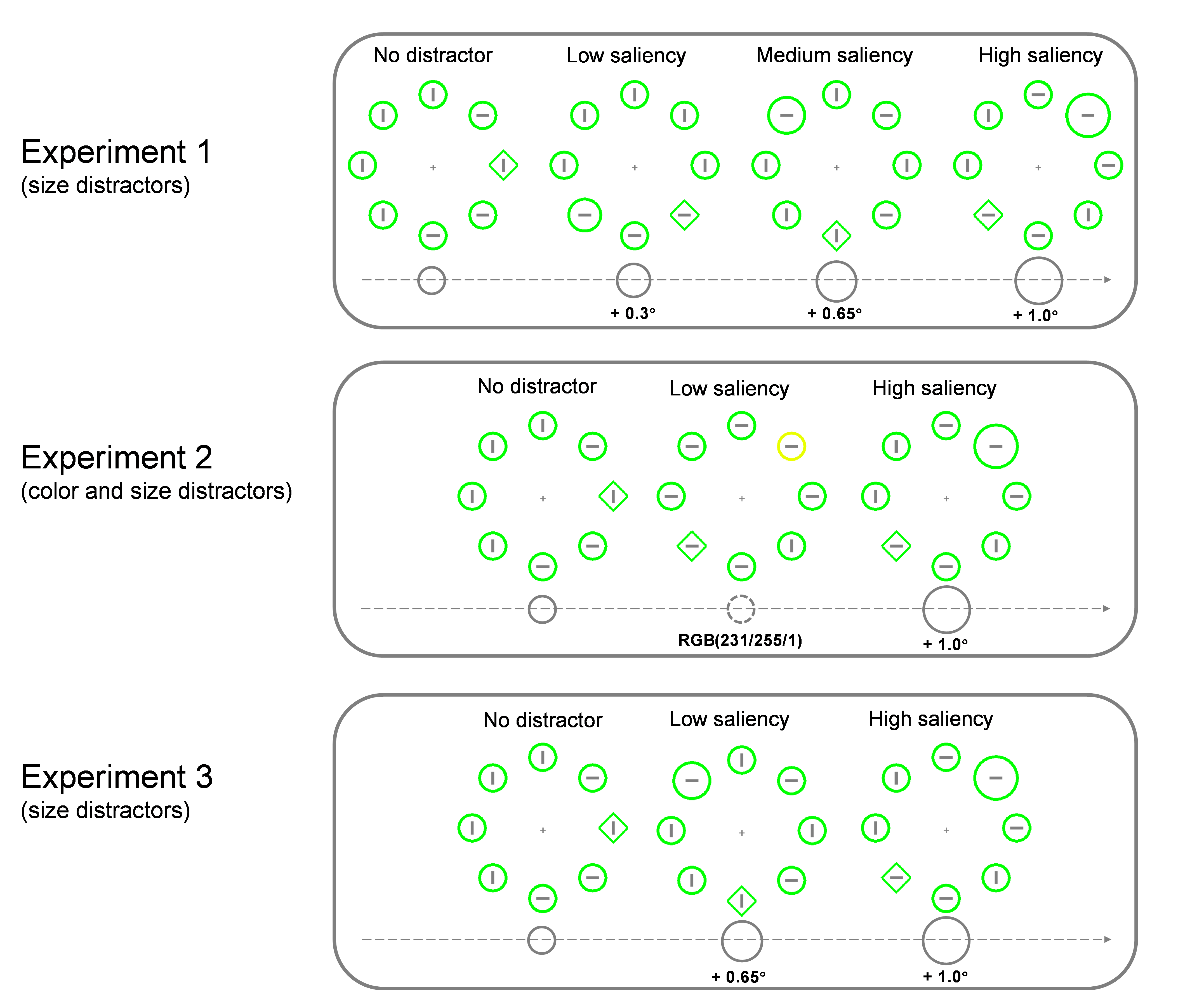
作者:宮棟宇 社科學(xué)院心理學(xué)系
指導(dǎo)老師:孫沛 社科學(xué)院心理學(xué)系
關(guān)鍵詞:視覺(jué)注意 顯著性 干擾物抑制 統(tǒng)計(jì)學(xué)習(xí)
Abstract
During everyday tasks, salient distractors may capture our attention. Recently it was shown that through implicit learning, capture by a salient distractor is reduced by suppressing the location where a distractor is likely to appear. In the current study, we presented distractors of different saliency levels at the same specific location asking the question whether there is always one suppression level for a particular location or whether, for one location, suppression depends on the actual saliency of the distractor appearing at that location. In three experiments, we demonstrate a saliency-specific mechanism of distractor suppression which can be flexibly modulated by the overall probability of encountering distractors of different saliency levels so as to optimize behavior in a specific environment. The results also suggest that this mechanism has dimension-independent aspects given that the saliency-specific suppression pattern is unaffected when saliency signals of distractors are generated by different dimensions. It is argued that suppression is saliency-dependent implying that suppression is modulated on a trial-by-trial basis contingent on the saliency of the actual distractor presented.


Fig. 1 Upper panel: Illustrations of search displays in Experiment 1, 2 and 3 showing possible distractor types and locations. The actual displays used in the experiments were presented on a uniform black background. Bottom panel: Probability distribution of appearing at different locations for different distractor types in Experiment 1, 2 and 3.
Experiment 1
In Experiment 1, we found evidence for saliency-specific suppression: when distractors having different saliency levels are presented at the same HPL, the amount of suppression was larger for distractors of a high saliency level relative to those of a low saliency level.

.png)
Fig. 2 Experiment 1: Left panel: Mean RTs by distractor saliency over distractor position condition. Right panel: The proportion of reduction in interference (from the LPL to the HPL) for different distractor saliency conditions.
Experiment 2
The results of Experiment 2 showed evidence supporting a mechanism of saliency-specific suppression regardless of whether this saliency is generated by color differences or size differences. The current results provide direct evidence for global saliency suppression models. Experiment 2 shows that through implicit learning, an object with a strong bottom-up saliency signal can be suppressed, regardless of the feature dimension that generates the signal.

.png)
Fig. 3 Experiment 2: Left panel: Mean RTs by distractor saliency over distractor position condition. Right panel: The proportion of reduction in interference (from the LPL to the HPL) for different distractor saliency conditions.
Experiment 3
In Experiment 3, for LS group, the low saliency distractor appeared on 80% of all distractor-present trials, resulting in a total number of 1440 low saliency distractor trials and 360 high saliency distractor trials; for HS group, the high saliency distractor appeared on 80% of all distractor-present trials, resulting in a total number of 1440 high saliency distractor trials and 360 low saliency distractor trials. Our manipulation on the frequency of encountering distractors of different saliency levels led to different suppression patterns in the LS group compared to the HS group. The frequency-induced strong capture for rare distractors presented at rare locations reshaped the saliency-specific suppression pattern we observed in Experiment 1 and 2.

.png)
Fig. 4 Experiment 3. Left panel: Mean RTs by distractor saliency over distractor position condition. Data from LS group and HS group are presented in the left and right panel respectively.






